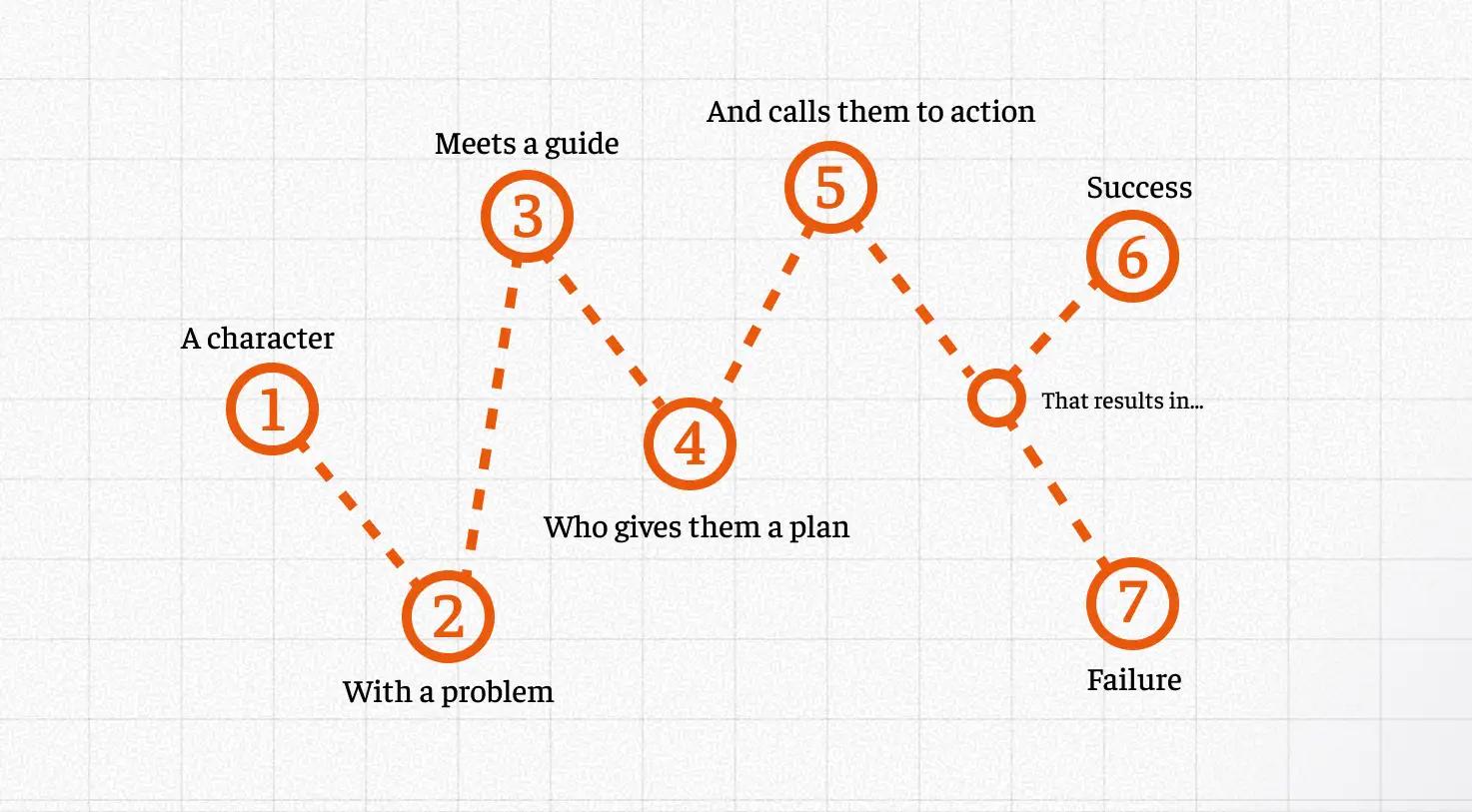What is the StoryBrand framework?

The StoryBrand framework is one of the most transformative marketing methodologies of the 21st century. It has fundamentally changed the way businesses think about their messaging, and the results have been impressive.
Where does StoryBrand come from?
The StoryBrand framework comes from the best-selling business book Building a StoryBrand: Clarify Your Message So Customers Will Listen by Donald Miller, a career author who noticed an interesting overlap between storytelling and marketing.
The thesis of the book is simple: every customer is on a journey, but the business isn’t the hero of the story. The customer is.
Too many companies produce self-serving marketing. They try to make themselves the hero of their customer’s story. In reality, they are the guide to the customer’s journey. By applying this classic storytelling trope to marketing, Miller created the antidote to self-absorbed marketing.
How does it work?
Donald Miller laid out a 7-step framework to become the customer’s guide:
1. The Character
This isn’t just anyone. The character is the ideal customer (or customers) that makes up the brand’s target audience. It is important to identify this character’s goals, concerns, questions, and fears in order to correctly address them with empathy.
2. Has a problem
This is the core obstacle in the customer’s life. Whether they are an individual consumer or a B2B buyer, their customer journey is typically fueled by three levels of problems:
- External: What’s happening in the world to create the problem.
- Internal: How they feel about the problem.
- Philosophical: How they feel the situation ought to be.
3. And meets a guide
This is where your brand comes in. It’s important that your messaging builds empathy and the hero sees you as their guide. “Best in the business” claims don’t work anymore. Customers need to be shown that you understand them and know how to help them meet their goals.
4. Who gives them a plan
This is where you show them what it takes. Your plan needs to be simple, digestible, and easy to act upon. The StoryBrand team typically recommends a 3-step plan of action like “Reach out. Plan. Get to work.”
5. And calls them to action
This is where you invite the hero, the customer, on the journey. There is no room for passivity. A good CTA emphasizes action and urgency.
6. That ends in success
This is where you help them visualize what they can achieve through your product or service. Get them excited to start the journey by reminding them what is possible.
7. And helps them to avoid failure
You also need to remind them of what’s at stake if they don’t take action. Illustrate the outcome that will result from saying no to the journey.
What does StoryBrand look like in practice?
When a business walks through the StoryBrand framework, it typically kicks off an internal transformation within the company. Businesses who might have relied on meaningless marketing jargon learn how to clearly articulate the benefit they bring to their customers' lives. In practice, this typically takes the form of a “brand script,” an internal document that is used to create improved website content, taglines, promotional material, and even improved scripts for sales people.
StoryBrand is accessible to anyone with the 7-step framework. You can even ask ChatGPT to create a brand script for your business. Try a prompt like: “Create a brand script for [my company] by following the 7-step StoryBrand framework.” While StoryBrand can certainly be DIY-ed, many businesses often choose to work with an agency that’s familiar with the messaging process.
What happens after StoryBrand?
The StoryBrand framework is a great starting point for developing a content strategy, but it’s only the beginning.
Once you clarify your message at a high level with the StoryBrand process, you can continue to build out your content. Share your industry knowledge with your audience and make them experts on your solution. Put that content to work through videos, email campaigns, and advertising.
How has the StoryBrand framework influenced USDP’s approach to messaging?
Our team has been interested in the StoryBrand methodology for many years. Its customer-focused style remains a part of our approach to messaging; however, as of 2025, we are no longer certified StoryBrand guides.
As marketing has evolved, we’ve expanded our approach to messaging beyond the 7-step StoryBrand framework. With clear storytelling as the foundation, we develop content strategies that educate, solve messaging problems, raise awareness through campaigns, and make an impact.
If you are interested in learning more about our approach to messaging, check out our brand storytelling page.